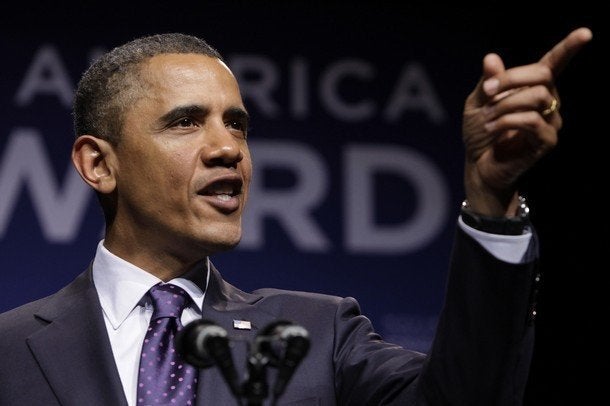
When oil spills, foodborne illness outbreaks, mining disasters, and product recalls make headlines, government's ability -- or inability -- to protect citizens makes the headlines, too. Were the right rules in place, and were they being enforced? Should someone have spotted the problem ahead of time?
The Obama administration has faced its fair share of crises, including the BP oil spill disaster, the Upper Big Branch mine explosion, the recall of millions of Toyota cars and trucks, and the ongoing salmonella outbreak linked to contaminated eggs. In each case, problems at the root of the crisis can be traced back to some regulatory failure.
These tragedies have colored the administration's regulatory record, but it has been successful in leaving its own mark as well, a new OMB Watch report shows. The report, "The Obama Approach to Public Protection: Rulemaking", examines health, safety, and environmental rules from major federal agencies to determine whether the rules meet public needs.
In the OMB Watch report, two major points emerge. First, the Obama administration is philosophically different from the Bush administration: instead of pushing a hands-off, anti-regulatory agenda, agencies now embrace the idea that government can play a positive role in society, protecting consumers, workers, businesses, and the environment. Second, much work remains. The regulatory process is almost unchanged from previous administrations, and more needs to be done to fill the regulatory gaps that leave those consumers, workers, businesses, and the environment at risk.
The philosophical change, represented by both President Obama and the appointees he has tapped to lead regulatory agencies, has produced an aggressive rulemaking record in certain critical areas. One example is climate change. When Obama and U.S. Environmental Protection Agency (EPA) Administrator Lisa Jackson took over, it was not yet the position of the U.S. government that climate-altering greenhouse gas emissions were a problem. The administration remedied that situation quickly, proposing and finalizing a rule that declared greenhouse gases a danger to public health and welfare. The administration then set new emissions standards for passenger vehicles and for stationary sources like power plants and oil refineries. Meanwhile, the Department of Energy has finalized several new energy efficiency standards for home appliances aimed at saving consumers money and reducing our energy demand in the process.
Other agencies covered in the OMB Watch report have approached rulemaking informed by the old adage, an ounce of prevention is worth a pound of cure. In 2009, the administration took several steps to improve food safety, including a rule that will prevent salmonella contamination in eggs. (Sadly, that rule went into effect too late to prevent the current outbreak.) The Occupational Safety and Health Administration (OSHA) has promised a rule establishing its Plan, Prevent, Protect initiative that, among other things, would require employers to maintain and follow safety plans and aim to protect workers from essentially any hazard they may face on the job.
The OMB Watch report finds plenty of room for improvement as well. The Department of Labor has finalized too few rules to protect workers, and OSHA's Plan, Prevent, Protect initiative is in only its earliest stages. New auto safety rules have disappointed advocates who had hoped for more protective standards. After some initial progress, food safety rulemaking has tailed off. While climate change and clean air have been high priorities, other environmental issues, like species protection, have not.
The regulatory process remains a major barrier. Obama pledged early in his administration that he would write a new executive order to reform the system, but the order never came. Agencies still conduct a variety of analyses, including cost-benefit analysis, for every rule they write even when the analysis is not required by law. They must then send rules and the accompanying analyses to the White House Office of Management and Budget (OMB) for review. As a result, rules often take years to produce.
In fairness, change takes time. For example, the Obama administration has increased budgets for several key regulatory agencies, many of which have faced resource and staff constraints for years limiting their ability to respond to problems. But hiring new people is only the first step: training and ongoing support is still needed.
The OMB Watch report looks at the Obama administration's record through August 2010 - not a sufficient enough time to draw firm conclusions about the agencies assessed. Agencies that have shown little progress thus far, such as the Labor Department, have agendas that hold great promise. Other agencies that hit the ground running, like the EPA, will need to show a sustained commitment to using regulation in the public interest.
Furthermore, it will take years to undo the toll of neglect left by the Bush administration and to make significant progress in reducing some of the stunning health, safety, and environmental risks Americans face. Every year, more than 30,000 people die in car accidents, and more than 4,000 workers die on the job. Twenty-three million Americans suffer from asthma, and foodborne illness kills thousands and sickens millions more.
Regulation will never completely cure these social ills, but better rules and a commitment to a positive, proactive government can help. The Obama administration must continue to regulate in the public interest in order to extend protection and opportunity to America where it wants and needs it most.
The OMB Watch report is the first in a series. The second report, covering regulatory enforcement, and the third report, delving more deeply into the regulatory process, will be published in the coming weeks.